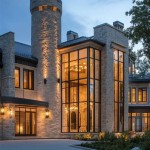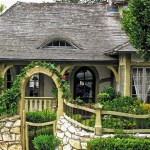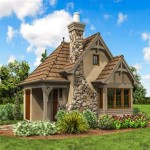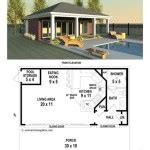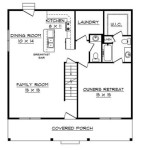Adobe brick house plans are blueprints specifically designed for constructing houses using adobe bricks, an ancient building material crafted from a mixture of clay, sand, and organic matter. These plans provide detailed instructions for every stage of the construction process, from site preparation to roofing.
Adobe brick houses are renowned for their energy efficiency, durability, and affordability, making them popular choices in regions with hot and dry climates. An iconic example is the Taos Pueblo in New Mexico, USA, which showcases centuries-old adobe brick architecture that has withstood the test of time.
In the following sections, we will delve into the key considerations when choosing adobe brick house plans, exploring their advantages and disadvantages, and discussing the construction process and design options available.
When selecting adobe brick house plans, it’s crucial to consider key factors:
- Climate suitability
- Energy efficiency
- Structural durability
- Affordability
- Design flexibility
- Maintenance requirements
- Local building codes
- Availability of materials
Understanding these aspects ensures an informed decision and a successful adobe brick house building project.
Climate suitability
Adobe brick houses are ideally suited to hot and dry climates with low annual precipitation. The thick, earthen walls provide excellent thermal insulation, keeping interiors cool during the day and warm at night. Adobe’s high thermal mass absorbs and stores heat from the sun, releasing it gradually overnight, reducing the need for heating and cooling systems.
In regions with moderate rainfall, adobe houses can perform well if proper precautions are taken to prevent moisture damage. This includes using moisture-resistant coatings on exterior walls, ensuring adequate drainage around the house, and avoiding excessive landscaping that can trap moisture near the foundation.
However, adobe is not suitable for climates with high humidity or frequent rainfall. Constant moisture can penetrate the walls, leading to structural damage and mold growth. In such areas, alternative building materials or additional protective measures may be necessary.
It is crucial to consult with local building professionals and thoroughly research the climate conditions of the intended building site before opting for adobe brick house plans. This ensures that the house will be well-suited to the local environment and provide a durable and comfortable living space.
Energy efficiency
Adobe brick houses are renowned for their exceptional energy efficiency, offering numerous benefits:
- Thermal insulation: Adobe bricks have a high thermal mass, meaning they absorb and store heat slowly. This property keeps interiors cool during hot days and warm during cold nights, reducing the need for heating and cooling systems.
- Passive solar heating: Adobe’s dark color and high thermal mass allow it to absorb solar heat during the day. This heat is then released gradually overnight, providing a natural heating source.
- Airtightness: Properly constructed adobe houses are airtight, minimizing air leaks and drafts. This reduces heat loss in winter and heat gain in summer, further enhancing energy efficiency.
- Low embodied energy: Adobe bricks are made from locally sourced materials, such as clay and sand, which require minimal processing and transportation. This results in a low embodied energy compared to other building materials, contributing to the overall sustainability of adobe construction.
The energy efficiency of adobe brick houses translates into significant savings on energy bills and a reduced carbon footprint. By utilizing the natural properties of adobe, these houses provide a comfortable and environmentally friendly living environment.
Structural durability
Adobe brick houses are known for their exceptional structural durability, providing strength and longevity to withstand various environmental conditions and aging.
- Compressive strength: Adobe bricks possess high compressive strength, enabling them to bear significant weight without crumbling or deforming. This makes adobe suitable for multi-story buildings and structures with heavy roofs or other loads.
- Thermal stability: Adobe has a low coefficient of thermal expansion, meaning it does not expand or contract significantly with temperature changes. This stability prevents cracking and structural damage caused by thermal stresses, ensuring the longevity of adobe buildings.
- Seismic resistance: Properly constructed adobe houses have good seismic resistance, particularly in low- to moderate-intensity earthquake zones. The thick, interconnected walls and the inherent flexibility of adobe bricks allow them to absorb and dissipate seismic forces without catastrophic failure.
- Fire resistance: Adobe bricks are fire-resistant, providing a natural. They do not burn or contribute to the spread of flames, offering an additional layer of protection in case of a fire.
The structural durability of adobe brick houses makes them a reliable choice for long-lasting and resilient buildings, able to withstand the test of time and various environmental challenges.
Affordability
Adobe brick house plans offer notable affordability advantages, making them an attractive option for budget-conscious builders:
- Low material costs: Adobe bricks are made from locally sourced materials, such as clay and sand, which are often readily available and inexpensive. This significantly reduces the cost of building materials compared to other construction methods.
- Reduced labor costs: Adobe bricks are relatively easy to work with and can be laid by skilled laborers without the need for specialized equipment. This reduces labor costs associated with construction.
- Energy efficiency: As discussed earlier, adobe houses are highly energy-efficient, leading to lower energy bills and reduced operating costs over the life of the building.
- Durability and longevity: Adobe brick houses are renowned for their durability and longevity, requiring minimal maintenance and repairs compared to other building materials. This reduces long-term expenses and contributes to the overall affordability of adobe construction.
The affordability of adobe brick house plans, coupled with their energy efficiency and durability, makes them a cost-effective and sustainable choice for homeowners seeking to build an eco-friendly and budget-friendly home.
Design flexibility
Adobe brick house plans offer remarkable design flexibility, allowing architects and homeowners to create unique and personalized living spaces:
- Organic shapes and curves: Adobe bricks are highly malleable and can be molded into various shapes and curves. This allows for the creation of organic and flowing designs, adding a touch of artistry and uniqueness to adobe homes.
- Diverse architectural styles: Adobe brick houses can adapt to various architectural styles, from traditional to contemporary. The earthy tones and textures of adobe bricks complement different design aesthetics, providing a versatile canvas for architects to express their creativity.
- Customizable layouts: Adobe brick house plans can be customized to meet the specific needs and preferences of homeowners. The modular nature of adobe bricks allows for easy modifications to room sizes, shapes, and configurations, ensuring a personalized living environment.
- Integration with natural surroundings: Adobe brick houses blend seamlessly with natural surroundings, especially in arid and desert landscapes. The earthy colors and textures of adobe harmonize with the surrounding environment, creating a sense of unity and belonging.
The design flexibility of adobe brick house plans empowers architects and homeowners to realize their creative visions and build homes that are both aesthetically pleasing and functional.
Maintenance requirements
Adobe brick houses, like any other type of building, require regular maintenance to ensure their longevity and structural integrity. While adobe is a durable material, it is not immune to the effects of weathering and aging. Here are the key maintenance requirements for adobe brick houses:
Moisture control: Adobe is susceptible to moisture damage, so it is essential to keep moisture away from the walls. This includes repairing any leaks in the roof or plumbing system promptly, ensuring proper drainage around the house, and avoiding excessive landscaping that can trap moisture near the foundation. Regular inspections for cracks or signs of moisture intrusion are also crucial.
Structural maintenance: Over time, adobe walls may develop cracks due to settlement or other factors. These cracks should be repaired promptly to prevent further damage. Regular inspections of the walls, roof, and foundation are recommended to identify any structural issues early on.
Pest control: Adobe brick houses can be susceptible to pests such as termites and rodents. Regular pest inspections and treatments are necessary to prevent infestation and damage to the adobe walls.
Re-plastering: The exterior walls of adobe houses may require re-plastering over time to maintain their protective coating. Re-plastering involves applying a new layer of adobe plaster to the walls, which helps to seal cracks, prevent moisture penetration, and enhance the overall appearance of the house.
By following these maintenance guidelines, homeowners can ensure that their adobe brick house remains in good condition for many years to come.
Local building codes
Compliance and Safety Standards
Adhering to local building codes is paramount when constructing an adobe brick house. These codes are established to ensure the structural integrity, safety, and habitability of buildings within a specific jurisdiction. By complying with local building codes, homeowners can guarantee that their adobe brick house meets the minimum safety standards and is suitable for occupancy.
Variations in Building Codes
Building codes can vary significantly from one municipality to another. These variations are often influenced by local climate conditions, seismic activity, and cultural practices. For instance, areas prone to earthquakes may have stricter building codes related to structural reinforcement and seismic design. It is essential to familiarize yourself with the specific building codes applicable to your construction site to ensure that your adobe brick house plan complies with local regulations.
Code Enforcement and Inspections
Local building departments are responsible for enforcing building codes and conducting inspections throughout the construction process. These inspections verify that the construction adheres to the approved plans and meets the safety standards outlined in the building codes. Homeowners are required to obtain building permits and schedule inspections at designated stages of construction, such as foundation, framing, and electrical rough-in. Failure to comply with local building codes can result in penalties, delays, or even the suspension of construction.
Benefits of Code Compliance
Complying with local building codes offers several benefits. It ensures that your adobe brick house is structurally sound and safe for habitation. It also protects you from legal liabilities and potential disputes with neighbors or regulatory authorities. Furthermore, adhering to building codes can enhance the value and marketability of your property, as it demonstrates that the house has been constructed according to recognized safety standards.
Availability of materials
The availability of materials is a crucial factor to consider when planning an adobe brick house. Adobe bricks are primarily made from clay, sand, and organic materials, such as straw or dung. The availability and quality of these materials can vary depending on the region and local conditions.
- Clay: Clay is the primary component of adobe bricks, and its quality and availability can significantly impact the strength and durability of the bricks. Suitable clay for adobe bricks should have a balanced composition of different clay minerals, such as kaolinite, montmorillonite, and illite. The presence of excessive sand or organic matter in the clay can compromise the structural integrity of the bricks.
- Sand: Sand is another essential ingredient in adobe bricks, providing strength and stability. The ideal sand for adobe bricks should be coarse-grained, with particles ranging in size from 0.5 to 2 millimeters. Fine-grained sand can lead to cracking and shrinkage, while excessively coarse sand can result in a weaker bond between the clay particles.
- Organic materials: Organic materials, such as straw, hay, or dung, are added to the clay mixture to improve the workability and flexibility of the bricks. These materials create air pockets within the bricks, reducing their density and increasing their insulating properties. The type and quantity of organic materials used can influence the thermal performance and durability of the bricks.
- Water: Water is used to bind the clay, sand, and organic materials together and create a workable mixture for making adobe bricks. The amount of water added should be carefully controlled to achieve the optimal moisture content for molding and drying the bricks.
The availability of these materials and their quality can impact the cost and feasibility of building an adobe brick house in a particular location. It is advisable to consult with local experts or conduct thorough research to assess the availability and suitability of materials before finalizing your adobe brick house plans.










Related Posts



